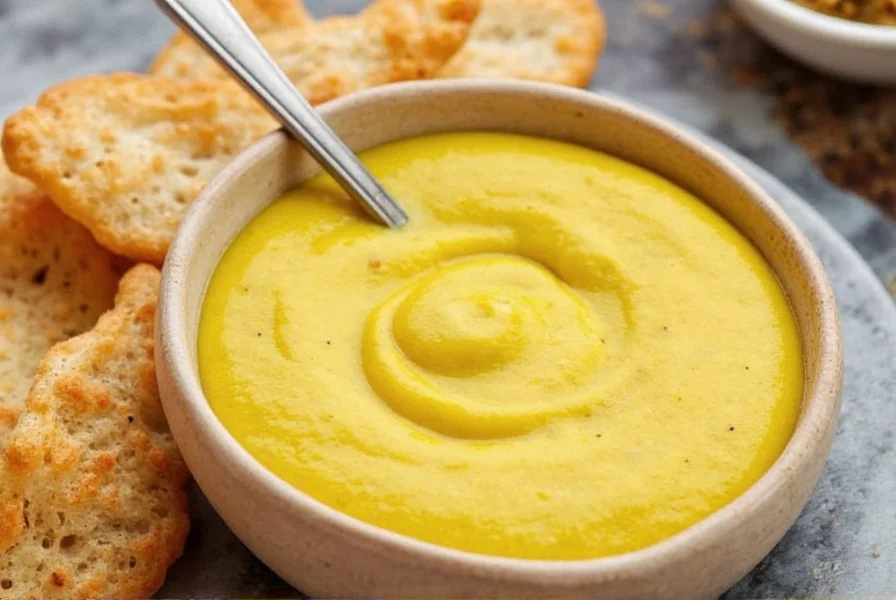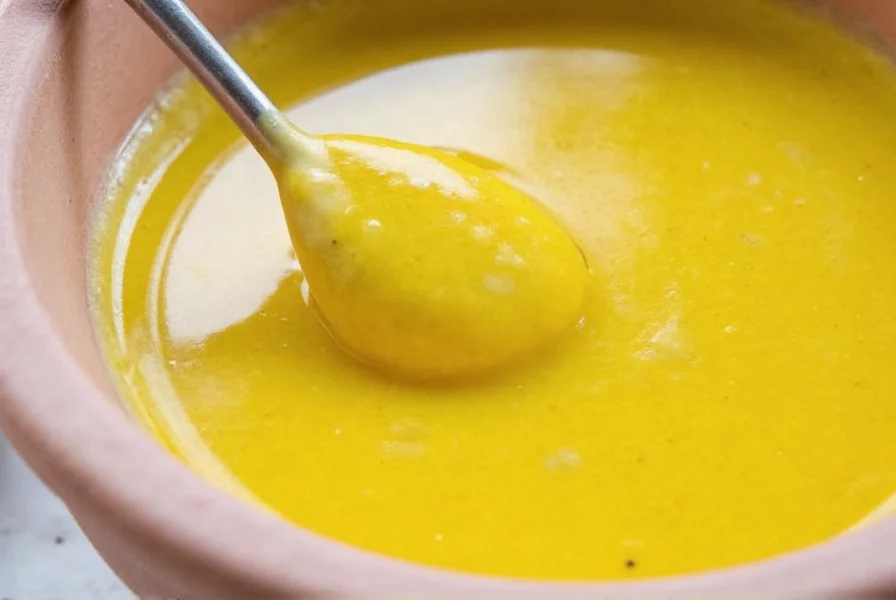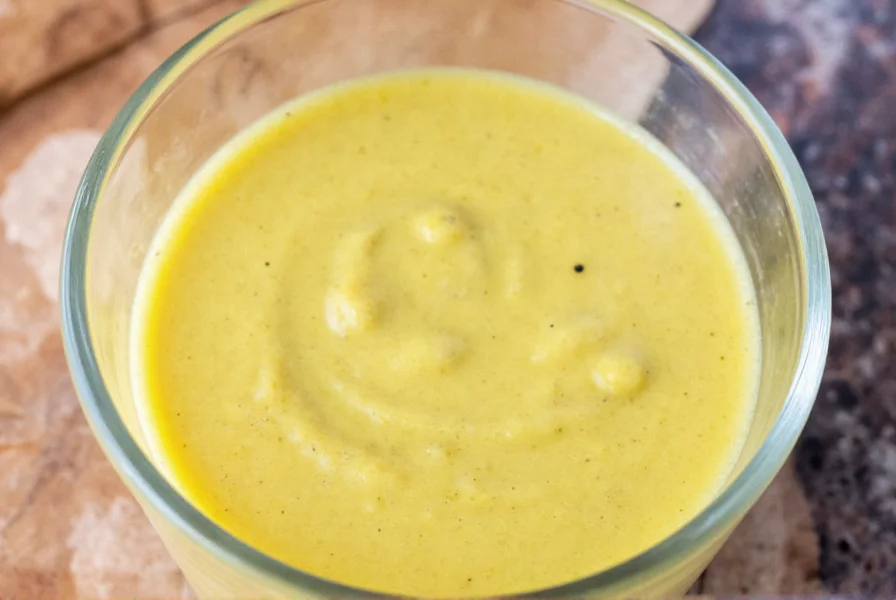Mustard sauce has been delighting palates for thousands of years, with its origins tracing back to ancient civilizations. The basic preparation involves combining mustard seeds with liquid ingredients that activate the enzymes responsible for that characteristic pungent flavor. When mustard seeds come into contact with liquid, the enzyme myrosinase converts sinigrin (a glucosinolate) into the pungent compound allyl isothiocyanate, creating that familiar sharp taste.
A Brief History of Mustard Sauce
The earliest recorded use of mustard dates to Roman times, where cooks mixed unfermented grape juice (mustum) with ground mustard seeds, creating mustum ardens or "burning must"—the origin of the word "mustard." By the 9th century, monks in France began cultivating mustard plants, and by the 13th century, Dijon had become the epicenter of French mustard production. The introduction of vinegar instead of verjuice (sour grape juice) in the 19th century created the smoother, more consistent mustard we recognize today.
Core Ingredients and Their Functions
While recipes vary, all mustard sauces share these fundamental components:
| Ingredient | Function | Common Variations |
|---|---|---|
| Mustard seeds | Provides base flavor and heat | Yellow (mild), brown (hotter), black (most pungent) |
| Acidic liquid | Activates enzymes, preserves | Vinegar, wine, lemon juice, verjuice |
| Water | Controls consistency | Amount determines thickness |
| Spices | Enhances complexity | Turmeric, garlic, paprika, horseradish |
| Sweeteners | Balances acidity | Honey, sugar, maple syrup |

Global Varieties of Mustard Sauce
Mustard sauce manifests differently across culinary traditions:
- American yellow mustard - The most common variety in the US, made with turmeric for color and vinegar for tang, perfect for hot dogs and burgers
- Dijon mustard - Originating from Dijon, France, made with brown mustard seeds and white wine, featuring a smooth texture and complex flavor profile ideal for vinaigrettes
- Whole grain mustard - Contains partially ground or whole seeds, offering textural contrast and robust flavor, excellent with roasted meats
- Spicy brown mustard - Features coarsely ground seeds and spices like cloves and coriander, popular for sausages and pretzels
- English mustard - Made with both yellow and brown seeds, known for its intense heat that dissipates quickly
- German sweet mustard - Sweeter preparation often served with weisswurst and other Bavarian specialties
Culinary Applications Beyond the Condiment Tray
Professional chefs and home cooks alike utilize mustard sauce in numerous creative ways:
As an emulsifier, mustard helps bind vinaigrettes and prevents separation in sauces. Its acidity cuts through rich flavors in dishes like beef Wellington or coq au vin. In marinades, the enzymes in mustard help tenderize proteins while adding flavor complexity. Many pastry chefs incorporate small amounts into baked goods to enhance other flavors without making the final product taste mustardy.
For those exploring homemade mustard sauce recipe options, the preparation method significantly affects the final product's heat level. Adding mustard powder to cold liquid creates maximum pungency, while mixing with hot liquid (above 140°F/60°C) denatures the enzymes, resulting in a milder sauce. Allowing the mixture to rest for 1-2 days lets flavors mellow and develop.

Nutritional Profile and Health Considerations
Compared to many condiments, mustard sauce offers notable nutritional advantages. A typical teaspoon (5g) contains just 3-5 calories, negligible fat, and no sugar in its most basic form. Mustard seeds contain selenium, magnesium, and omega-3 fatty acids. The compound allyl isothiocyanate may have anti-inflammatory properties and could potentially support cardiovascular health.
When evaluating different types of mustard sauce for dietary needs, consider that prepared mustards vary significantly in sodium content. Some specialty mustards incorporate honey or sugar, increasing carbohydrate content. For those with specific dietary restrictions, most basic mustard sauces are naturally gluten-free, vegan, and kosher, though always verify individual product labels.
Creating Exceptional Homemade Mustard Sauce
Producing restaurant-quality mustard sauce at home requires attention to ingredient ratios and timing. Start with high-quality mustard seeds—freshness dramatically impacts flavor. For a classic Dijon-style preparation, combine 1/2 cup brown mustard seeds with 1/2 cup white wine, 1/4 cup white wine vinegar, 1 tablespoon salt, and optional flavorings like 1 minced shallot and 1 teaspoon white wine mustard powder.
Soak the mixture for 24-48 hours to allow the seeds to absorb liquid and enzymes to activate, then blend to desired consistency. The magic happens during the resting period—flavors continue developing for up to two weeks. For a smoother texture, strain through a fine mesh sieve after blending. Remember that homemade mustard sauce recipe variations can include additions like honey for sweetness or horseradish for extra heat, but maintain the fundamental seed-to-liquid ratio for proper emulsion.
Pairing Mustard Sauce with Foods
Understanding what is mustard sauce made of helps determine ideal pairings. The classic combination with charcuterie and cheese boards showcases mustard's ability to cut through fatty flavors. On sandwiches, Dijon complements roast beef while yellow mustard enhances the experience of a classic hot dog. For grilled vegetables, a whole grain mustard vinaigrette adds complexity without overwhelming delicate flavors.
When selecting the best mustard sauce for sandwiches, consider the other ingredients. Stronger mustards like English or stone-ground pair well with robust meats like pastrami, while milder preparations work better with delicate proteins like turkey or chicken salad. The acidity in mustard sauce also makes it an excellent palate cleanser between courses of rich foods.
Frequently Asked Questions
What gives mustard sauce its distinctive heat and how can I control it?
The heat in mustard sauce comes from allyl isothiocyanate, created when mustard seed enzymes react with liquid. You can control the heat level by adjusting the liquid temperature and resting time. Using cold liquid (below 140°F/60°C) maximizes heat, while hot liquid denatures the enzymes for milder results. Allowing the sauce to rest for 1-2 days mellows the initial sharpness as flavors develop and integrate.
How long does homemade mustard sauce last and how should it be stored?
Properly prepared homemade mustard sauce can last 2-3 months when stored in an airtight container in the refrigerator. The vinegar content acts as a natural preservative. For optimal flavor development, allow homemade mustard to rest for at least 3 days before using, as the flavors continue to mellow and improve over the first two weeks. Always use clean utensils when handling to prevent contamination.
What are the key differences between Dijon mustard and yellow mustard?
Dijon mustard uses brown or black mustard seeds with white wine, resulting in a smooth texture and complex, sharp flavor profile. Yellow mustard uses milder yellow mustard seeds with turmeric for color and vinegar, creating a brighter yellow color and simpler tangy taste. Dijon typically has no added sweeteners, while many yellow mustards contain sugar. The different seed varieties and preparation methods create distinct culinary applications—Dijon excels in sauces and dressings, while yellow mustard works best on sandwiches and hot dogs.
Can mustard sauce be used as a meat tenderizer and how does it work?
Yes, mustard sauce makes an excellent meat tenderizer due to its combination of acidity and enzymatic activity. The vinegar or wine in mustard breaks down muscle fibers, while the enzymes in mustard seeds (myrosinase) help break down proteins. For best results, coat meats thoroughly with mustard sauce and refrigerate for 2-12 hours before cooking. This works particularly well with tougher cuts like brisket or pork shoulder, enhancing both tenderness and flavor penetration.
What are some creative culinary uses for mustard sauce beyond traditional condiment applications?
Chefs use mustard sauce in numerous innovative ways: as an emulsifier in vinaigrettes and mayonnaise, incorporated into bread dough for subtle flavor enhancement, blended into mashed potatoes for complexity, used as a base for barbecue sauces, added to cheese spreads for tang, and even included in small amounts in baked goods like pretzels to enhance other flavors. Mustard also works well in marinades for tofu and vegetables, and can be mixed with honey for a glaze on roasted meats or salmon.










 浙公网安备
33010002000092号
浙公网安备
33010002000092号 浙B2-20120091-4
浙B2-20120091-4